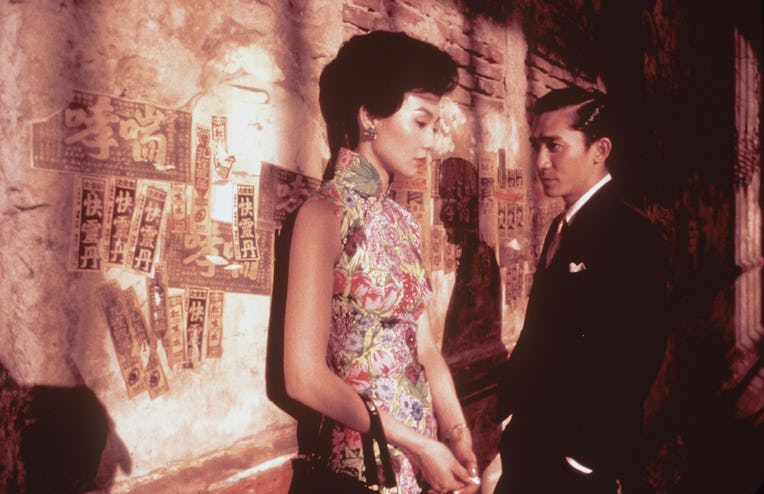We Get It, You Love In the Mood for Love
I do, too, but I haven’t made it my whole personality

Wong Kar-wai’s In the Mood for Love is a seminal work of cinema. In the two decades since the film was originally released, not only has its popularity endured, but by my estimation, it has only seemed to increase. In the past year alone, it seems that everywhere I look people are name-dropping the film — and its director — anew: on Twitter, on TikTok, on Instagram.
Maybe this has to do with the Criterion Collection debuting a new “World of Wong Kar Wai” box set earlier this year, or the Cannes Film Festival screening a restored version of In the Mood for Love this summer, or the news that Wong will be auctioning off a snippet of never-before-seen footage in the form of an NFT this fall through Sotheby’s, or perhaps even thanks to the renewed spotlight on Hong Kong cinema in light of updated censorship laws that allow the government to interfere with films on the grounds of “national security.”
Whatever the reason, people seem to love In the Mood for Love more than ever these days — and what’s more, they are in the mood to proclaim their love for it. And why shouldn’t they? There’s a lot to appreciate about this film and its tale of two neighbors who, betrayed by their respective spouses, slowly fall in love with each other. So much so that simply referencing the title carries with it some suggestion of cultural cachet: an aura of cool, an implication of taste, a cinephile’s stamp of approval. It’s like uttering the words “Karl Ove Knausgaard” in front of a bunch of people who like to read — it means something.
So just what is it about this film that makes it such a perfect title to admire in public? Well, to begin with the obvious, it’s just the right amount of “foreign” (by which I mean it falls outside of the major Anglo-speaking regions). Liking foreign films exudes a scent of worldliness; it’s sophisticated in the same way as expats who spend their days lounging in greenery-enshrouded, sun-dappled cafes. But tasteful European classics are a dime a dozen. The next level of global film taste is Asian cinema, and the Cantonese-language In the Mood for Love — with its exquisite blend of “East meets West” (sorry) in a 1960s Hong Kong still under British rule — is a great entry-level choice. Saying you love this movie lets others know that you are a citizen of the world, and what’s more, not just limited to the hegemonic transatlantic canon. A perfect fit for people who studied abroad in college and returned home with a slight, unplaceable accent.
The next obvious point is that the film’s two leads are gorgeous. It is absolutely true that Maggie Cheung as secretary Su Li-zhen is a tall, slender, floral-adorned vision, and Tony Leung as journalist Chow Mo-wan is a handsome man made even more irresistible by soulful eyes that suffuse every glance with a gentle excruciation, and the chemistry between them throbs like a tender bruise when pressed too hard. But loudly admiring these stars’ looks — and yes, I’m including everyone who made a big deal of calling Leung a finely aged smoke show after watching Shang-Chi and the Legend of the Ten Rings recently — has the added bonus of suggesting how open-minded you are to all shades of hotness. I do mean that racially.
Cheung and Leung aren’t the only visual treat, either; the whole movie is a triumph of aesthetics. That is arguably its biggest selling point, which explains how often In the Mood for Love gets screencapped and GIF’d and color palette’d, each evocative shadow and rich slash of red pored over and remixed obsessively. When you say you love this film, you are also saying you have an eye for beauty, which, through some indirect line of reasoning, also points to a nice sense of style and/or a home with impeccably eclectic design and decor. (Or so you hope, at least.)
Finally, to get to matters of the soul, In the Mood for Love deals in longing, ambiguity, and malaise — the feelings of our time. In a sea of feel-good TV and sanitized blockbusters in which every loose end is just the lead-in to the next installment in the extended universe, favoring a feature in which so much is unsaid and unresolved feels like a statement of sorts. Almost, even, an act of courage, one might say? 🙈 That’s right, you’re proud to let the world know that you love art, and you love auteurship, and you love feeling so deeply in a way that you just don’t really see so much anymore these days. You love In the Mood for Love, and by god, you don’t care who knows it.